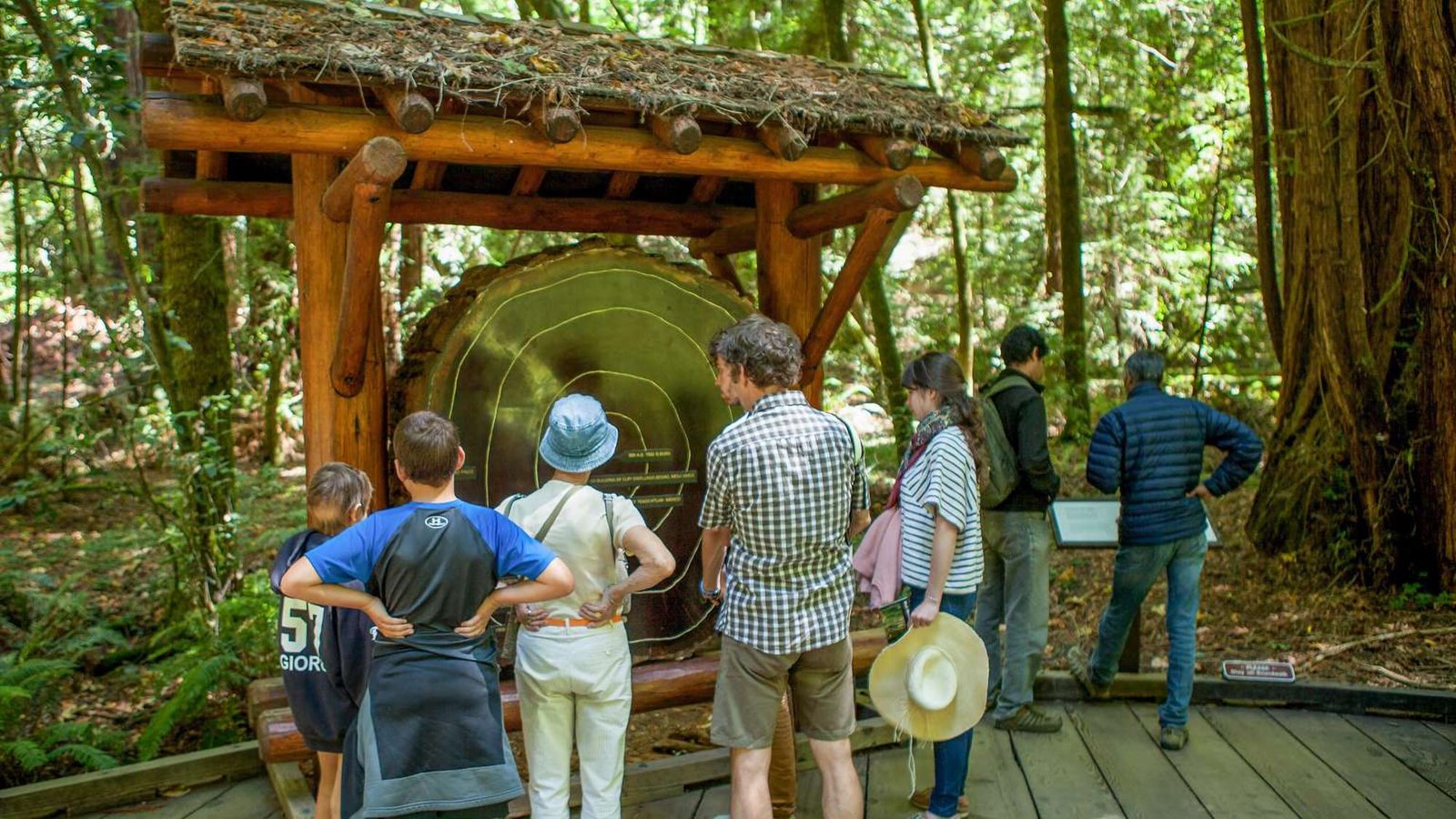Last updated: January 28, 2021
Place
Redwood Cross-Section

Chad Beale
Historical/Interpretive Information/Exhibits
When this tree fell in 1930, this cross-section was put on display. The concentric rings of the tree reveal that it lived 1,021 years. Some redwoods live more than 2,000 years.
The Old Ones
Fossil records indicate that relatives of today's coast redwoods were living large during the Jurassic Period 160 million years ago. The dinosaurs may have bit the dust, but the redwoods continue to thrive in this location, one they have inhabited for some 20 million years thanks to environmental conditions that remain largely unchanged.
A combination of latitude, elevation and microclimates in the California Coast Ranges makes it possible for redwoods to grow.
These factors are also what limits the redwoods' range to a few hundred coastal miles. The cool, moist air created by the Pacific Ocean keeps the trees continually damp, even during summer droughts. California's North Coast provides the only such environment in the world. The trees can live to be 2,000 years old, and regularly reach 600 years.
Redwoods are tough customers. They possess built-in resistance to insects and fire. Diseases are virtually unknown. Their unusual ability to regenerate also aids in their survival as a species. Sprouts may come directly from a snag or downed tree's root system. Basal burls, which are hard, knotty growths that form from dormant seedlings on a living tree, can sprout a new tree when the main trunk is damaged by fire, cutting or toppling.
Hotter Planet, Bigger Trees?
Since the 1970s, researchers have noted some coast redwood and giant sequoia trunks are growing at a rate faster than others previously documented. Could this be the result of climate change? Experts aren't sure, but think it's possible. One theory suggests that increased sunlight due to less summer fog, but a still-adequate amount of winter precipitation, is spurring the growth. Another theory is that wildfire suppression reduces the amount of fire stress, allowing redwoods to expend more energy on trunk growth. Whatever the reason, the available evidence suggests that, at least for now, redwoods are growing faster in the changing environment.
